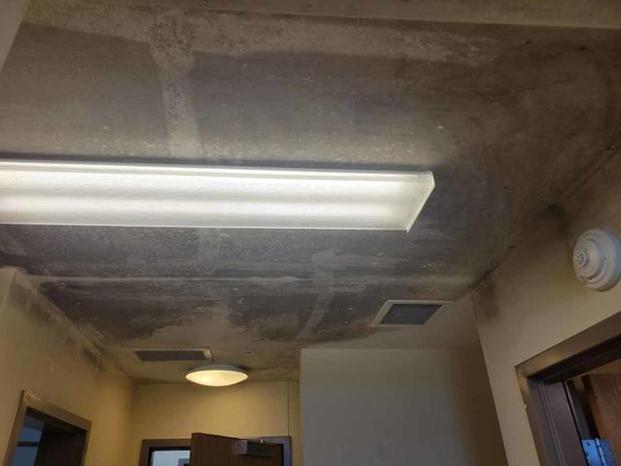Over the next two months, the active-duty component of the Army will inspect all the buildings in its inventory for mold, including barracks, as the service tries to get its arms around a problem plaguing outdated living quarters across the country.
All facilities are set to be inspected by Nov. 18, according to an internal memo reviewed by Military.com. The sudden wide-ranging inspection comes after a Military.com investigation on poor living conditions at Fort Stewart, Georgia, in which service member's barracks are infested with mold, painting the walls and doors black.
This publication was also first to detail a similar issue at Fort Bragg, North Carolina. There, roughly 1,200 had to be relocated to new living quarters after years of moldy conditions grew even worse in the muggy climate. That evacuation shook garrison logistics and is likely to complicate day-to-day operations for the foreseeable future. Twelve barracks at Fort Bragg are set to be demolished next year, five years ahead of schedule. An additional five are set to be remodeled.
Read Next: How Trauma Before Service is Shaping a Generation of Troops
"Our Soldiers and families must have healthy and safe environments in which to live and work, so reports of mold or mildew need to be addressed immediately," Rachel Jacobson, assistant secretary of the Army for installations, energy and environment, said in a statement to Military.com. "Orders for walk-throughs at Army Reserve and National Guard buildings will be issued soon. This comprehensive infrastructure assessment will enable the Army to identify issues that need remediation and make informed decisions about renovation and new construction priorities."
A lot of the Army's mold issues are being attributed to outdated infrastructure. Many of the service's barracks were built 50 years ago, all of which have long outdated air conditioning systems that are known to leak and are difficult to repair.
Sergeant Major of the Army Michael Grinston has made improving the quality of life for soldiers a key focus during his tenure. The service has secured $10 billion it plans to spend on barracks over the next decade. However, it can take roughly five to six years to build new living quarters, a sluggish timetable Army planners blame on a labyrinth of bureaucracy, slow-rolling construction.
With construction taking years after projects are greenlit, the Army is short on solutions in the interim. Simply taking inventory of all the service's mold issues will likely only answer the scope of how bad the mold problem is, but it's unclear if the Army will be able to move soldiers if that inspection reveals more instances of intense mold infestation.
"All senior commanders will prioritize and remediate or mitigate the reported deficiencies by immediately submitting work orders resulting from the inspections and supporting any soldier moves as needed," the memo said.
Fort Bragg's relocation effort was unprecedented, and most installations do not have excess barracks while moving soldiers en masse to civilian housing could stretch an already bursting real estate market.
The Army did a similar servicewide inspection in 2021 of family housing following widespread news coverage of privatized base residences.
-- Steve Beynon can be reached at Steve.Beynon@military.com. Follow him on Twitter @StevenBeynon.
Related: Mold Is Consuming Fort Stewart's Barracks as a Pattern Emerges Across the Army












